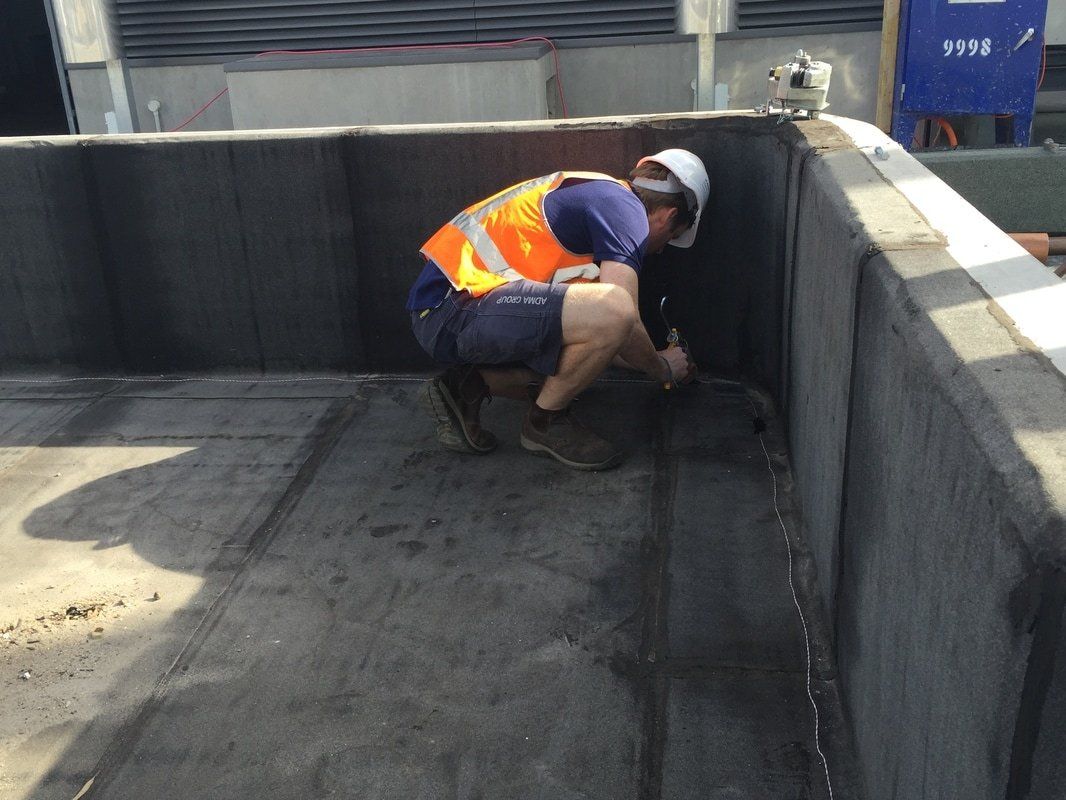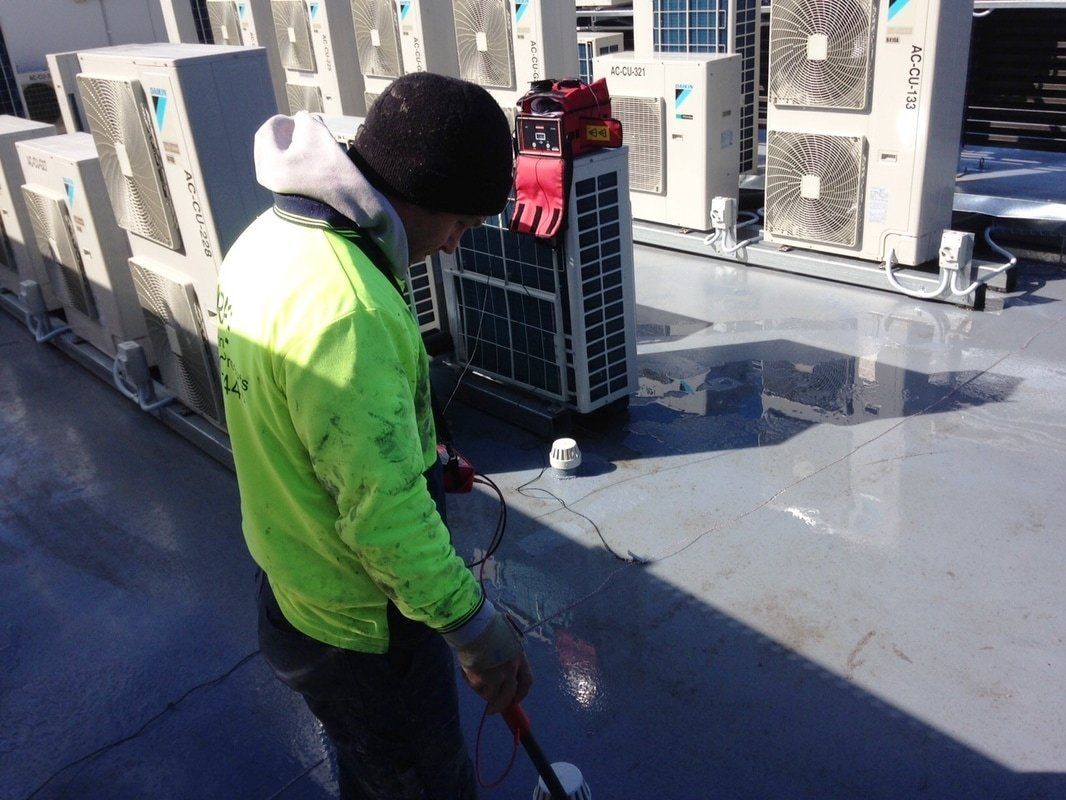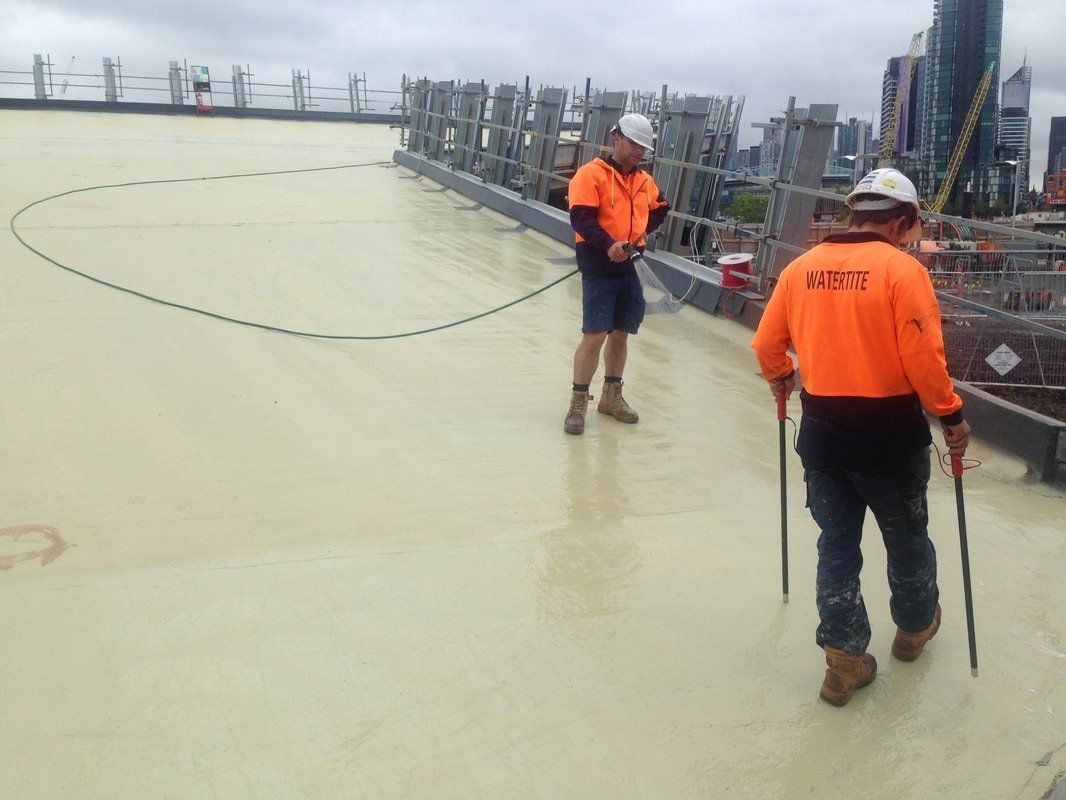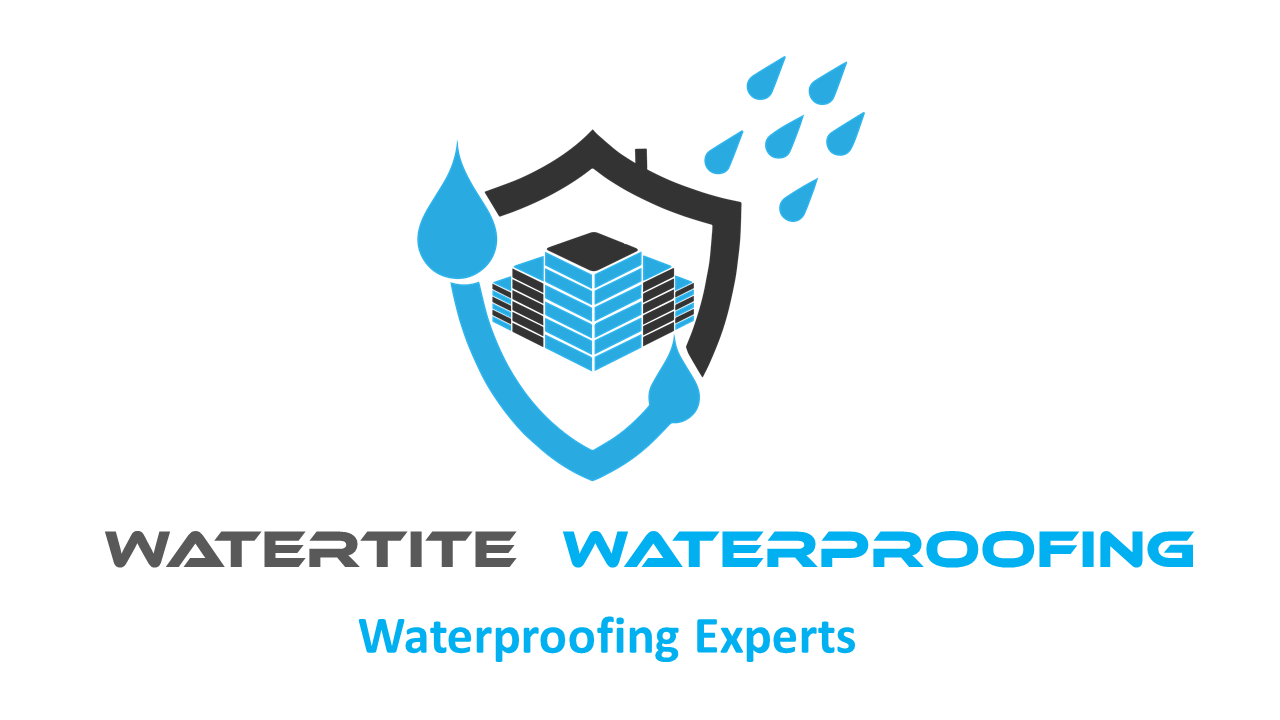EVFM Testing
The Watertite EVFM technique uses water as an electrically conductive medium; therefore, it is essential that the surface to be tested is wet. If it is not raining at the time of the survey, then water needs to be sprayed over the area. Once the area is suitable for the test, the Watertite technician installs an un-insulated wire loop around the perimeter of the area and connects the electrical pulse generator to the wire. The electrical pulse generator delivers a 40-volt potential for one second every three seconds. The pulsating potential on the wet roof surface forms an “electrical plate.” The grounded structural deck is the other “electrical plate,” while the membrane separating the two plates acts as the insulator. If moisture enters a breach in the membrane, an electrical contact is established between the two plates (i.e., an electrical ground).
Using a potentiometer connected to two probes, the Watertite technician steps into the electric field and places the probes on the surface. If there is a breach in the membrane, the dial on the potentiometer will move either to the left or to the right. The Watertite technician can then follow the direction of the electric field to the membrane breach. Because of the high electrical resistance through the roof, the magnitude of the electrical current is relatively small.
The benefits for EVFM can be summarized as follows:
- Ability to locate defects precisely and non-destructively.
- Ability to re-test repairs immediately.
- Can be used after cover systems are installed, especially with “green roof” landscapes – where a permanent wire is left in place.
- Eliminates the hazard of overloading structural decks during testing, since ponding water is not part of the testing procedure.
- Can be used on sloped roof surfaces where flood testing is impossible.
Leak Detection
The Watertite EVFM technique uses water as an electrically conductive medium; therefore, it is essential that the surface to be tested is wet. If it is not raining at the time of the survey, then water needs to be sprayed over the area. Once the area is suitable for the test, the Watertite technician installs an un-insulated wire loop around the perimeter of the area and connects the electrical pulse generator to the wire. The electrical pulse generator delivers a 40-volt potential for one second every three seconds. The pulsating potential on the wet roof surface forms an “electrical plate.” The grounded structural deck is the other “electrical plate,” while the membrane separating the two plates acts as the insulator. If moisture enters a breach in the membrane, an electrical contact is established between the two plates (i.e., an electrical ground).
Using a potentiometer connected to two probes, the Watertite technician steps into the electric field and places the probes on the surface. If there is a breach in the membrane, the dial on the potentiometer will move either to the left or to the right. The Watertite technician can then follow the direction of the electric field to the membrane breach. Because of the high electrical resistance through the roof, the magnitude of the electrical current is relatively small.
The benefits for EVFM can be summarized as follows:
- Ability to locate defects precisely and non-destructively.
- Ability to re-test repairs immediately.
- Can be used after cover systems are installed, especially with “green roof” landscapes – where a permanent wire is left in place.
- Eliminates the hazard of overloading structural decks during testing, since ponding water is not part of the testing procedure.
- Can be used on sloped roof surfaces where flood testing is impossible.











